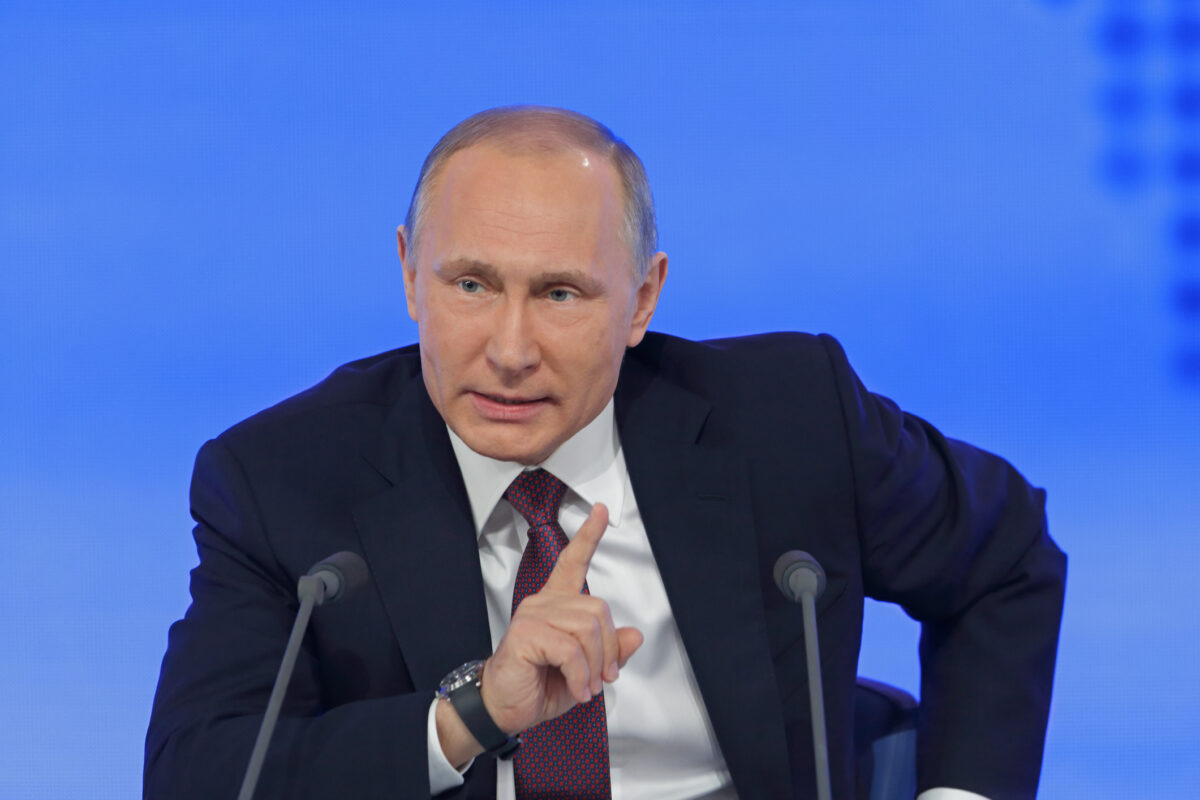Are the signs in Eastern Europe pointing to peace? On the surface, one could interpret a number of recent trends in this way. On the one hand, Ukraine is under enormous pressure—both on the battlefield and on the international stage. Russian troops are slowly but surely advancing in the Donets Basin. Russian attacks on Ukraine’s energy infrastructure are having an ever stronger effect.
In the United States, President Donald Trump made great play of the fact that he wants to end the war as quickly as possible. In Western and Central Eastern Europe, a phalanx of populist parties has emerged, for whom international law, European solidarity and democratic values—and thus the fate of Ukraine—are at best of secondary importance.
On the other hand, Putin’s rule in Russia is coming under economic pressure. Inflation is rising and the ruble is falling. Russia’s human and material losses on the Ukrainian front are enormous and Moscow can only partially compensate for them.
In the Middle East, South Caucasus and Central Asia, Russia is being ousted as a power factor, and with that, Putin’s reputation as a geopolitical strategist is being lost. In both Ukraine and Russia, recent polls now show majorities in favor of a quick ceasefire in the Donets Basin.
Does this finally give Europe a chance to end the war permanently? Hardly—because most of the well-meaning intentions and well-intentioned proposals in this direction lead to deadlock.
For one thing, a number of ceasefire plans and more far-reaching ideas for a settlement do not take into account the involved parties’ basic preferences. They run counter to both, Russia’s ambitious hegemonic aspirations and/or Ukraine’s fundamental security interests. The formula, ‘Nothing about Ukraine without Ukraine’ is not only a noble political maxim, but also a guarantee of survival for Kyiv.
Russia is seeking not only to curtail the Ukrainian nation, but to abolish it as an independent cultural community and sovereign nation state.
Repetition and imitation
On the other hand, many peace projects either consciously or unconsciously develop conflict resolution strategies that imply rewarding Russian military aggression and punishing Ukrainian nuclear abstinence.
Similar to the consequences of today’s generations’ careless treatment of the natural environment, the international acceptance of a Russian victory in Ukraine would plant a time bomb under the international security system. A partial ceasefire might be possible today for a certain period of time. However, the codification of territorial gains for Russia and/or sovereignty losses for Ukraine would encourage their repetition and imitation by later Russian or other revisionist governments.
Furthermore, a treaty-regulated territorial and/or political reduction of the Ukrainian nation state would become a warning sign for other countries around the world that are relatively weaker in relation to their neighbours.
Whether democratically elected or having come to power undemocratically, many governments would rethink their national security strategies. Regional arms races would be likely. New atomic weapons programs and an end to the Nuclear Non-Proliferation Treaty as well as to the conventions on chemical and biological weapons would become a distinct possibility.
Undermining of the international system
Many proponents of a partial capitulation of Ukraine are now posing as friends of peace and opponents of war. However, they must not only say A, but also B: The price of a Russian victory, currently the only possible temporary end to the war, would not only be blatant injustice to Ukraine. It would also mean the undermining of the international system of states.
Mankind would enter a kind of ‘new old world’: Borders would again be shifted by the might of the stronger, weaker states would be militarily suppressed by imperial powers, and expansionist governments would commit genocide with impunity.
Only those who are willing to pay this high price have the right to demand an end to arms supplies to Ukraine, an end to sanctions against Russia and the transfer of Ukrainian spoils of war to Moscow—occupied territories, deported children, expropriated real estate, and so on.
Many apparent friends of peace do not recognise their rhetorical support for Russian imperialists and the warmongers of this world. Most of the alleged war opponents in Europe forget or keep quiet about the fact that they are talking about rewarding a campaign of conquest and thus making future wars more likely.
Allowing an aggressor to reap the fruits of his aggression is considered de-escalatory, and not as a mistaken pacifist strategy that makes new use of force more likely.
Abolishing Ukraine
In addition to their ignorance of the high level of collateral damage to world and security policy of a Russian victory, many advocates of negotiations suffer from political cretinism regarding Russia’s imperial intentions. Today’s Moscow leadership may not yet have fully fascist qualities, but it wants much more than a mere restriction of sovereignty and cession of territory in Ukraine.
The ultimate goal is not only to abolish the independent Ukrainian nation state as far as possible.
Ukraine is also a political testing ground, geostrategic instrument, military deployment zone and resource reservoir for Russia in pursuit of its broader goals in Eastern Europe and beyond.
Since 2022, both Moscow’s hostility and its objectives vis-à-vis the West have steadily expanded. The subjugation of Ukraine is now less of a prize than the first step in a fundamental revision of European and world politics that Moscow is seeking.
This does not yet mean an immediate continuation of kinetic warfare beyond Ukraine’s borders. Moscow’s repeated threats against the West with conventional and weapons of mass destruction are less announcements of action than part of a hybrid toolbox for corroding democratic societies, states and organisations.
Instruments of subversion
At certain stages, diplomatic activities are also suitable instruments of subversion for Moscow rather than an alternative approach to conflict resolution. As the Swedish political scientist Charlotta Rodhe put it, the ‘Russian negotiation theater’ has more performative and manipulative than practical functions.
A minimal goal of negotiations can be to stall the negotiating partner, and a maximal goal can be to extract concessions that would otherwise have to be won by purely military means. Foreign advocates of negotiations today act as welcome ‘useful idiots’ for the Kremlin, facilitating Moscow’s hybrid warfare and unconsciously hindering an actual and sustainable peace solution by strengthening Ukraine.
Russia’s attack on Ukraine is not only a war of conquest and extermination, but also acts as a wedge for Moscow. The debates about helping Ukraine and ending the war are fragmenting Western parties, parliaments, governments and alliances.
The flood of refugees from Ukraine is boosting anti-Western populist parties such as the Alternative for Germany and the Sarah Wagenknecht Union in the Federal Republic of Germany. Last but not least, a Russia that conquers Ukraine militarily, diplomatically, or by a combination of the two, would use it as a springboard and resource for Moscow’s activities further west—whether kinetic or hybrid.
In particular, European states, but also other Western and non-Western countries, should have a range of national interests in a just peace to end the Russian-Ukrainian war.
This will only be possible, however, if there are new successful Ukrainian offensive operations based on good equipment with modern weapons. As long as this basic condition is not met, the search for a balance and compromise with Moscow will only further fuel Russia’s already adventurous foreign policy ambitions, rather than containing them.
Photo: Dreamstime.







